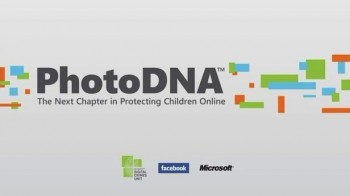The child pornography industry is a serious problem, and one of the rare cases where evidence of the acts often finds itself online — posted on websites or transferred over email or social networks.

However, the sheer quantity of images that are circulating online makes finding specific images of victims an enormous and challenging task for law enforcement agencies.
Microsoft has recently announced that it has partnered with Swedish company NetClean in order to go further in the fight against child pornography.
Its patented PhotoDNA technology will now be available free to law enforcement agencies that are investigating cases of child sexual abuse. As the amount of data being uploaded and transferred online explodes, this kind of software is critical if criminal investigation teams are going to keep up.
According to the National Center for Missing and Exploited Children, there have been over 65 million videos and images of child sexual exploitation cases reported since 2002.
“By arming law enforcement with this powerful technology, our goal is to help expedite investigations, limit officer exposure to the corrosive effects of viewing child rape images, and strengthen law enforcement’s ability to quickly identify and rescue victims and get child abusers off the street,” Bill Harmon, associate general counsel in Microsoft’s Digital Crimes Unit writes.
Developed with Dartmouth College in 2009, Microsoft’s PhotoDNA digital tool uses an approach similar to biometrics and facial recognition software. In order to sort through images to find instances of child pornography, the tool identifies copies of known child porn imagery.
The technique PhotoDNA uses is called ‘robust hashing’ — a mathematical approach that creates a unique signature for each photo. By using this, law enforcement agencies are able to match images, even if they have received alterations such as cropping or resizing, and match them on agency databases.
The software cannot be used to recreate the image or identify individuals.
PhotoDNA is already widely used by online platforms in an attempt to stem the flow and sharing of such images. Facebook and Microsot are among the companies who have integrated the software in order to identify and delete these kinds of images that are being shared across their platforms.
By making the time-consuming search automatic, hopefully it will make the detection and processing of such images — and therefore criminal investigations pertaining to them — faster, easier and less graphic for law enforcement to shoulder.
Source Znet






